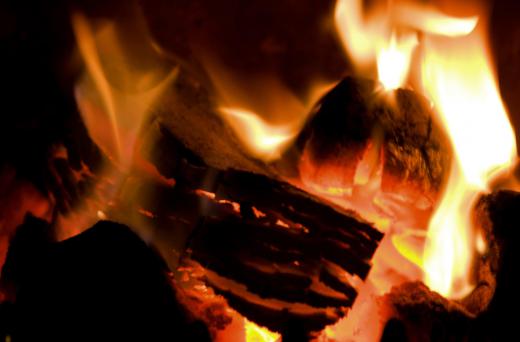A fire compartment is an area within a building which is completely surrounded with fire-resistant construction, usually with features such as automated fire-resistant doors which close when a fire is detected. Fire compartments are required by law in some types of buildings, and strongly recommended in others as a basic safety measure. Some insurance companies may also demand that fire compartments be installed before they will write policies for certain types of businesses, in the interests of reducing their liability.
In new construction, a fire compartment can be integrated right into the structure of the building. In addition to compartments, it is also possible to install barriers which are designed to slow a fire if it starts. The fire compartments can consist of rooms or groups of rooms. When a fire starts inside a compartment, the sealed nature of the area can compartmentalize the fire, preventing it from spreading to other areas. When a fire occurs outside the compartment, it can remain sealed off, and may potentially protect objects inside from the fire.

Fire compartments are not fire proof. Fire can work its way into or out of a fire compartment if it is intense enough, poorly managed, or not addressed quickly enough. However, fire compartments can still be valuable tools. Anything which slows the speed at which a fire can spread can contribute to fire safety, creating more time for people to evacuate, and potentially reducing fire damage. Valuable or important materials can be stored inside a compartment so that in the event a fire occurs, they may make it through the fire.
Existing buildings can be retrofitted to create fire compartments. Movable barriers can be installed, or people can remodel parts of a building to create a fire compartment. Also known as a fire zone, a fire compartment can also sometimes address the potential of flood damage, as the same materials which keep fire out can sometimes keep water at bay as well.
Installing fire compartments is usually done in tandem with the installation of other safety systems such as alarms and sprinklers. These systems work together so that if a fire does break out, it can be quickly addressed, and the damage caused by the fire can be minimized. As a general rule, a fire compartment is not a safe place to evacuate to; people should leave a building when a fire breaks out unless they absolutely must shelter in place.
Ever since she began contributing to the site several years ago, Mary has embraced the exciting challenge of being a About Mechanics researcher and writer. Mary has a liberal arts degree from Goddard College and spends her free time reading, cooking, and exploring the great outdoors.

